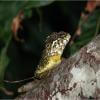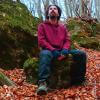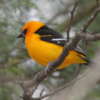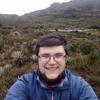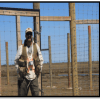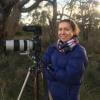Acoustic sensors enable efficient and non-invasive monitoring of a wide range of species, including many that are difficult to monitor in other ways. Although they were initially limited in application scope largely due to cost and hardware constraints, the development of low-cost, open-source models like the Audiomoth in recent years has increased access immensely and opened up new avenues of research. For example, some teams are using them to identify illicit human activities through the detection of associated sounds, like gunshots, vehicles, or chainsaws (e.g. OpenEars).
With this relatively novel dimension of wildlife monitoring rapidly advancing in both marine and terrestrial systems, it is crucial that we identify and share information about the utility and constraints of these sensors to inform efforts. A recent study identified advancements in hardware and machine learning applications, as well as early development of acoustic biodiversity indicators, as factors facilitating progress in the field. In terms of limitations, the authors highlight insufficient reference sound libraries, a lack of open-source audio processing tools, and a need for standardization of survey and analysis protocols. They also stress the importance of collaboration in moving forward, which is precisely what this group will aim to facilitate.
If you're new to acoustic monitoring and want to get up to speed on the basics, check out these beginner's resources and conversations from across the WILDLABS platform:
Three Resources for Beginners:
- Listening to Nature: The Emerging Field of Bioacoustics, Adam Welz
- Ecoacoustics and Biodiversity Monitoring, RSEC Journal
- Monitoring Ecosystems through Sound: The Present and Future of Passive Acoustics, Ella Browning and Rory Gibb
Three Forum Threads for Beginners:
- AudioMoth user guide | Tessa Rhinehart
- Audiomoth and Natterjack Monitoring (UK) | Stuart Newson
- Help with analysing bat recordings from Audiomoth | Carlos Abrahams
Three Tutorials for Beginners:
- "How do I perform automated recordings of bird assemblages?" | Carlos Abrahams, Tech Tutors
- "How do I scale up acoustic surveys with Audiomoths and automated processing?" | Tessa Rhinehart, Tech Tutors
- Acoustic Monitoring | David Watson, Ruby Lee, Andy Hill, and Dimitri Ponirakis, Virtual Meetups
Want to know more about acoustic monitoring and learn from experts in the WILDLABS community? Jump into the discussion in our Acoustic Monitoring group!
Header image: Carly Batist
No showcases have been added to this group yet.

- 0 Resources
- 0 Discussions
- 2 Groups
- @foxy50213
- | Mr.
- 0 Resources
- 0 Discussions
- 8 Groups
- 0 Resources
- 0 Discussions
- 4 Groups
- 0 Resources
- 3 Discussions
- 2 Groups
Founder & CEO of we.are.tohorā, creating a community that cares about whales, the environment and each other.
- 0 Resources
- 0 Discussions
- 13 Groups
- @bumbleben
- | He/Him
Junior dev in a bioacoustics startup, interested in all forms of remote sensing and biologging
- 0 Resources
- 0 Discussions
- 4 Groups
IBM
Software Engineer for last 20 years and running a conservation organization for last 3 years, looking for more opportunities to implement tech skills for conservation
- 0 Resources
- 0 Discussions
- 1 Groups
- 0 Resources
- 0 Discussions
- 5 Groups
- @Thomas_Luypaert
- | He/him
Norwegian University of Life Sciences (NMBU)
Ecological monitoring enthusiast with a focus on ecological and conservation research
- 1 Resources
- 1 Discussions
- 7 Groups
CIBIO-InBio
I am a PhD student working on wolf bioacoustics. I am combining Audiomoths and Deep Learning into more efficient wolf monitoring protocols. My main field of interest is population ecology.
- 0 Resources
- 0 Discussions
- 3 Groups
- @nlubcker
- | Dr
Results-Driven R&D Project Manager | Data scientist | I'm a versatile professional with 10 years of global experience in conservation and research.
- 0 Resources
- 1 Discussions
- 7 Groups
- @mariammatta
- | she/her
- 0 Resources
- 0 Discussions
- 7 Groups
To assist with creative research project in the DC/VA/MD region
6 January 2023
Careers
We are looking for someone who enjoys the craft of making to come and help run our London based lab.
5 January 2023
a technology-led solution to understanding the honeybees of the wasp world
8 December 2022
Acoustic survey data is used to estimate the diversity of critically endangered amphibians in the fragmented forests of Madagascar.
28 November 2022
A new issue of our community digest just went out! Check it out to discover a big platform update, and a summary of all the latest content from across WILDLABS in one easy to scan place!
4 November 2022
Five articles that include conservation tech published at Mongabay
20 October 2022
*New closing date!* WILDLABS and Fauna & Flora International are seeking an early career conservationist for 12-month paid internship position to grow and support the Southeast Asia regional community in our global...
19 October 2022
The Institute for Bird Populations (IBP) seeks a biologist to assist with an autonomous recording unit (ARU) bird monitoring project at California off-highway vehicle recreation parks and other ARU monitoring projects...
19 October 2022
"We develop the use of benthic species as animal oceanographers by combining archival (depth, temperature) data from animal-borne tags, passive acoustic telemetry & citizen-science mark-recapture records for the...
10 October 2022
The Yang Center is seeking a Software/Firmware Developer responsible for designing, developing, improving, and maintaining embedded systems to acquire and process bioacoustic data. The
6 October 2022
A collaborative and cross-disciplinary meeting of audio data scientists spawns creative research collaborations
3 October 2022
September 2025
event
October 2025
November 2025
event
September 2022
August 2022
July 2022
June 2022
event
64 Products
Recently updated products
| Description | Activity | Replies | Groups | Updated |
|---|---|---|---|---|
| Hi Wildlabbers, We've got a fascinating paper to show you, as shared with us by Claude Miaud. This study looks at how amphibian... |
|
Acoustics | 4 years 11 months ago | |
| I thought this article might be interesting to people in this group: "It’s common knowledge that bats navigate and search for... |
|
Acoustics | 4 years 11 months ago | |
| Hello to you all, I hope everyone is doing ok during this Covid-19 contingency. Jsut sharing this adaptation for the water proof case for the Audio Moth. https://www.... |
+2
|
Acoustics | 5 years ago | |
| Johnnie, Great. You can get me at work on c.abrahams@bakerconsultants.co.uk Ta, Carlos |
|
Acoustics | 5 years 1 month ago | |
| Hi everyone, Thanks for attending today's episode! You can find all of the collaborative notes at the link below, and we also encourage you to use this thread to connect... |
|
Acoustics | 5 years 1 month ago | |
| Hi everyone, If anyone is looking for the episode's collaborative notes, you can find them here: https://notes.datawrapper.de/p/Tech_Tutors_Episode_3 This doc... |
|
Acoustics | 5 years 1 month ago | |
| Hi all, There is a conversation underway in the "Ethics of conservation tech" group on best practices for responsible ue of... |
|
Acoustics | 5 years 2 months ago | |
| How do we get notified for the next group buy? |
|
Acoustics | 5 years 3 months ago | |
| Hello all, I am new to recording but have been learning about acousting environmental monitoring for several years now. Covid19 has me... |
|
Acoustics | 5 years 3 months ago | |
| Hi Isla, Range at which animals hear sounds depend on 4 things: 1) the frequency (pitch) of the sound of interest. As a rule of thumb, lower frequency sounds travel... |
|
Acoustics | 5 years 3 months ago | |
| We used the following lithium batteries. URL: https://fortebattery.en.made-in-china.com/product/FBDEubqyfGhH/China-C-Size-Lithium-Batteries-Cr26500-Cr26500se-... |
|
Acoustics | 5 years 3 months ago | |
| Hi Carly, The recording + our notes is here: WILDLABS Virtual Meetup - Acoustic Monitoring We also keep an archive of all past meetups here: ... |
|
Acoustics | 5 years 4 months ago |


